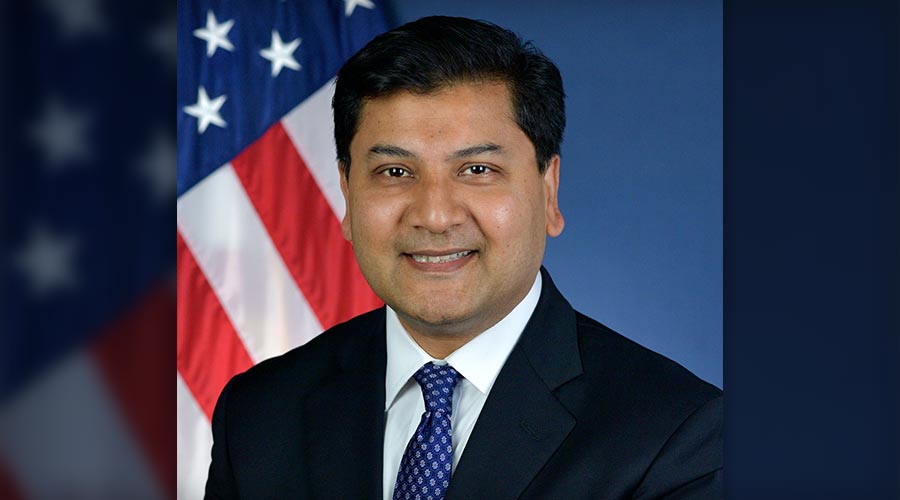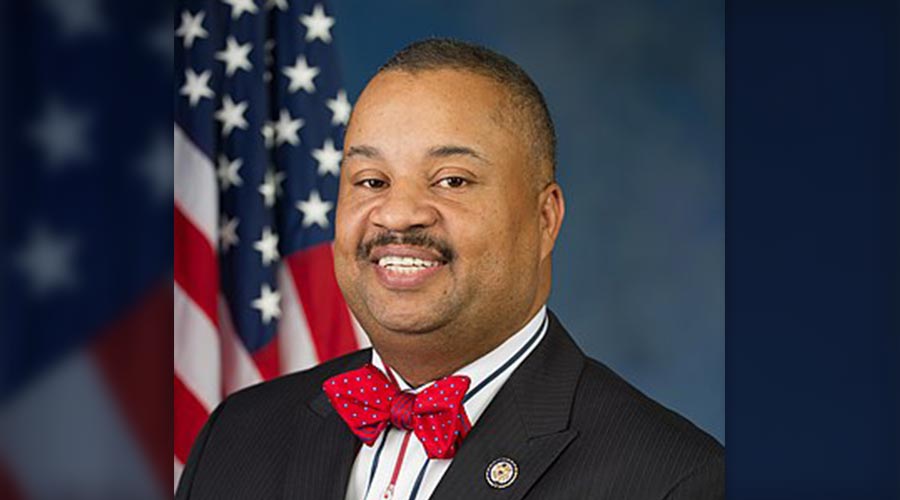Lawmakers push Bose on freight-rail safety issues
6/20/2022
By Julie Sneider, Senior Associate Editor
Subcommittee members recently heard testimony from, and posed questions to, rail industry representatives, union executives and regulators.
Federal Railroad Administration (FRA) Administrator Amit Bose and National Transportation Safety Board (NTSB) Member Thomas Chapman were the first to testify and respond to lawmakers’ questions. Progress has been made toward improving overall safety statistics, but the number of grade crossing and trespassing incidents occurring over the past decade has increased, Bose testified. However, grade crossing collisions have climbed 1% and trespassing casualties have risen 35% over the past 10 years. Together such incidents account for more than 95% of all rail-related fatalities, he said.
Meanwhile, the NTSB, which investigates transportation accidents, last year added rail-worker safety to its “Most Wanted List” of transportation safety improvements.
“Although NTSB has investigated rail-worker fatalities have declined overall in recent years, we continue to see recurring safety issues in our accident investigations that are 100% preventable, highlighting the need for better worker protections,” Chapman told lawmakers in his opening remarks.
U.S. Rep. Donald Payne Jr. (D-N.J.), the subcommittee’s chair, asked Bose about the FRA’s recent filing of a final rule that requires Class Is, Amtrak and commuter railroads to develop and implement a fatigue risk management program as part of their safety and risk reduction programs. Payne noted the freight-rail industry has lost over a third of its workforce over the past eight years, and as a consequence, workers report being forced to work harder and for longer hours, thereby increasing fatigue on the job.
 “Train length brings a host of issues that we have to address in a holistic way.” — FRA Administrator Amit Bose USDOT/Twitter
“Train length brings a host of issues that we have to address in a holistic way.” — FRA Administrator Amit Bose USDOT/TwitterLater in the hearing, Don Grissom, assistant general president of the Brotherhood of Railway Carmen Division TCU/IAM, testified that more attention needed to be focused on worker fatigue and its effect on safety. Class Is’ PSR operating practices and related workforce cuts have exacerbated worker fatigue, Grissom said.
“Carmen are being forced into overtime constantly,” he said. “Many of our members sleep in their cars between shifts so they can get an hour or two of rest instead of commuting home and back. This is not a healthy working environment.”
Bose acknowledged the FRA considers worker fatigue as a persistent threat to rail safety. The new rule will focus on hours of service, rest and cognitive ability of railway workers. “We think the rule will help us address the concerns” about worker fatigue in a comprehensive way, he said.
Bose was pressed by a number of lawmakers about the FRA’s automated track inspection program and whether the agency has denied Class Is’ applications to continue testing ATI technology under the FRA program.
A day before the hearing, the Association of American Railroads (AAR) called on policymakers to embrace technology such as ATI to improve safety. In a written statement, AAR officials claimed the FRA declined to extend the geographic scope of one railroad’s ATI pilot program, refused to let another’s continue and has delayed waiver applications for others’ pilots to continue.
“The data is clear: ATI is more effective than visual inspections alone, in some cases reducing track geometry defects by 90%,” AAR wrote. “Even where ATI is used, visual inspections continue, but they are not needed at the level specified by FRA’s 50-year-old inspection regulations. Slowing or stopping their use only stands to reduce investment in new safety technologies.”
During the hearing, Subcommittee Ranking Member U.S. Rep. Rick Crawford (R-Ark.) noted that ATI technology, developed for years with the FRA’s support, has shown to reduce rail accidents and complement (not replace) manual inspections.
“Given the proven benefit safety of ATI, why has the FRA suddenly decided to deny ATI petitions to continue testing ATI technology?” Crawford asked Bose.
Because the issue is in litigation and a petition is pending, Bose said he was limited in what he could say. (BNSF Railway Co. filed a petition for review in the U.S. Fifth Circuit Court of Appeals, naming the FRA’s March 2022 decision to deny its request to expand an existing waiver in order to broaden its ATI program.) The test program didn’t seek public comments and therefore it was not a “transparent process,” something the FRA is addressing now, Bose said. In addition, railroads can use ATI without test programs and waivers, he said.
“ATI can catch things that visual inspections can’t, such as road bed vegetation and track component defects, and those are important parts of track inspection,” he said. “We continue the test programs and we’ll get data from those programs to determine how to go forward. The Rail Advisory Committee is also looking at this. We want to do this in a collaborative way and they are looking at the issue directly and hopefully we can determine a path forward.”
 During the hearing, Subcommittee Chair Donald Payne Jr. noted Class Is primarily run two-man crews now, so there would be no major labor cost increase if the FRA adopted a two-person crew mandate. Rep. Payne’s website
During the hearing, Subcommittee Chair Donald Payne Jr. noted Class Is primarily run two-man crews now, so there would be no major labor cost increase if the FRA adopted a two-person crew mandate. Rep. Payne’s websiteNorfolk Southern Railway Executive Vice President and Chief Operating Officer Cindy Sanborn testified the FRA has given it and several railroads permission to test ATI systems on their networks in conjunction with a reduced level of traditional visual inspections. NS’s test programs have shown that its automated track geometry measurement system (ATGMS) has increased track safety and quality, even as manual inspections were reduced.
“Because our data clearly demonstrated that ATGMS was safer than legacy methods, in March 2021 we petitioned the FRA for a permanent waiver that would allow us to reduce manual inspection for all lines on which we had implemented ATGMS,” Sanborn said. “However, in March of this year, FRA denied that request.”
Not only was the denial issued contrary to the evidence, “the FRA did not explain how granting our waiver request could possibly endanger rail safety or the public interest,” Sanborn said. The FRA’s denial of both the NS and BNSF waiver requests is “difficult to understand.”
“The FRA had encouraged the development and deployment of this technology for years until abruptly changing their approach,” she said. “The FRA should go back to encouraging, not discouraging, technological advancements like [ATI] that advance safety.”
Meanwhile, Crawford and other lawmakers questioned Bose about the proposed two-person crew rule, which would require certain freight railroads to maintain a minimum of two people in a locomotive cab. The Obama administration released the proposed rule. The FRA under the Trump administration rescinded it, after it determined there wasn’t sufficient data to suggest whether a two-person crew was safer than a one-person crew.
“Given the [FRA’s] plans to now revive the two-man rule, is there any data to justify a safety benefit to this rule?” Crawford asked Bose.
The administrator responded that the proposal is under review and stakeholder comments are being considered.
“We definitely want to address the risks” associated with less-than-two-person train crews, said Bose.
 “The FRA should go back to encouraging, not discouraging, technological advancements like [ATI] that advance safety.” — Norfolk Southern Railway EVP and COO Cindy Sanborn secretary.emory.edu/board-of-trustees
“The FRA should go back to encouraging, not discouraging, technological advancements like [ATI] that advance safety.” — Norfolk Southern Railway EVP and COO Cindy Sanborn secretary.emory.edu/board-of-trustees Payne noted Class Is primarily run two-person crews now, so there would be no major labor cost increase if the crew mandate is adopted. Still, the AAR remains opposed to a two-person crew mandate, arguing new technologies make it possible for railroads to determine whether two people are needed in the cab to operate a train. In its pre-hearing statement, the association reiterated its view that “railroads, competing in a dynamic market defined by technology, need options in the future to redeploy employees outside of the cab.”
Also, Crawford expressed concern that the FRA’s pursuit of a two-person crew rule may have more to do with a campaign pledge Joe Biden made to labor unions.
“I want to make sure that whatever rulemaking we are engaging in is based on real safety concerns and not fulfilling promises to unions,” Crawford said.
The crew size issue came up a few other times during the hearing, including when U.S. Rep. Tom Malinowski (D-N.J.) asked about potential safety concerns over the increasing length of freight trains. He told Bose he previously raised the question under then-FRA Administrator Ron Batory, who rolled back the two-member crew rule during the Trump era.
“I asked him, say you have a 3-mile train operated by one crew member and the train breaks down. How long would it take that single crew member to walk the length of the train to figure out what was going on?” Malinowski said. “And [Batory] said, ‘It might take two or three hours. It depends on whether he’s a good walker or not.’ That kind of makes sense. Isn’t it common sense that there are concerns related to a very long train with just one person on that train?”
Bose told Malinowski the FRA is now monitoring train length. When he became FRA administrator, he was amazed to learn the department was not keeping track of train length when investigating accidents, Bose said.
“We changed that. We are now taking stock of the size of the train,” he added. “Train length brings a host of issues that we have to address in a holistic way.”


